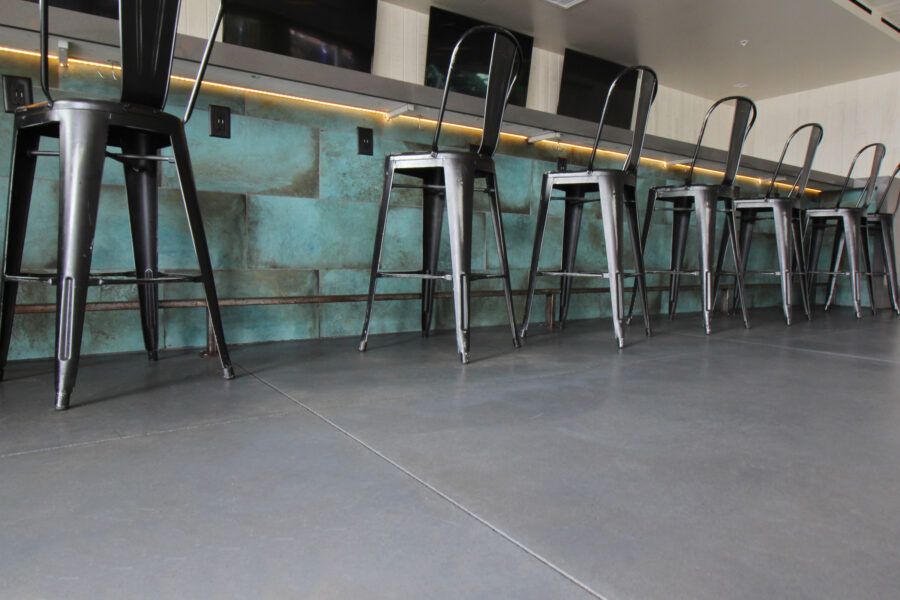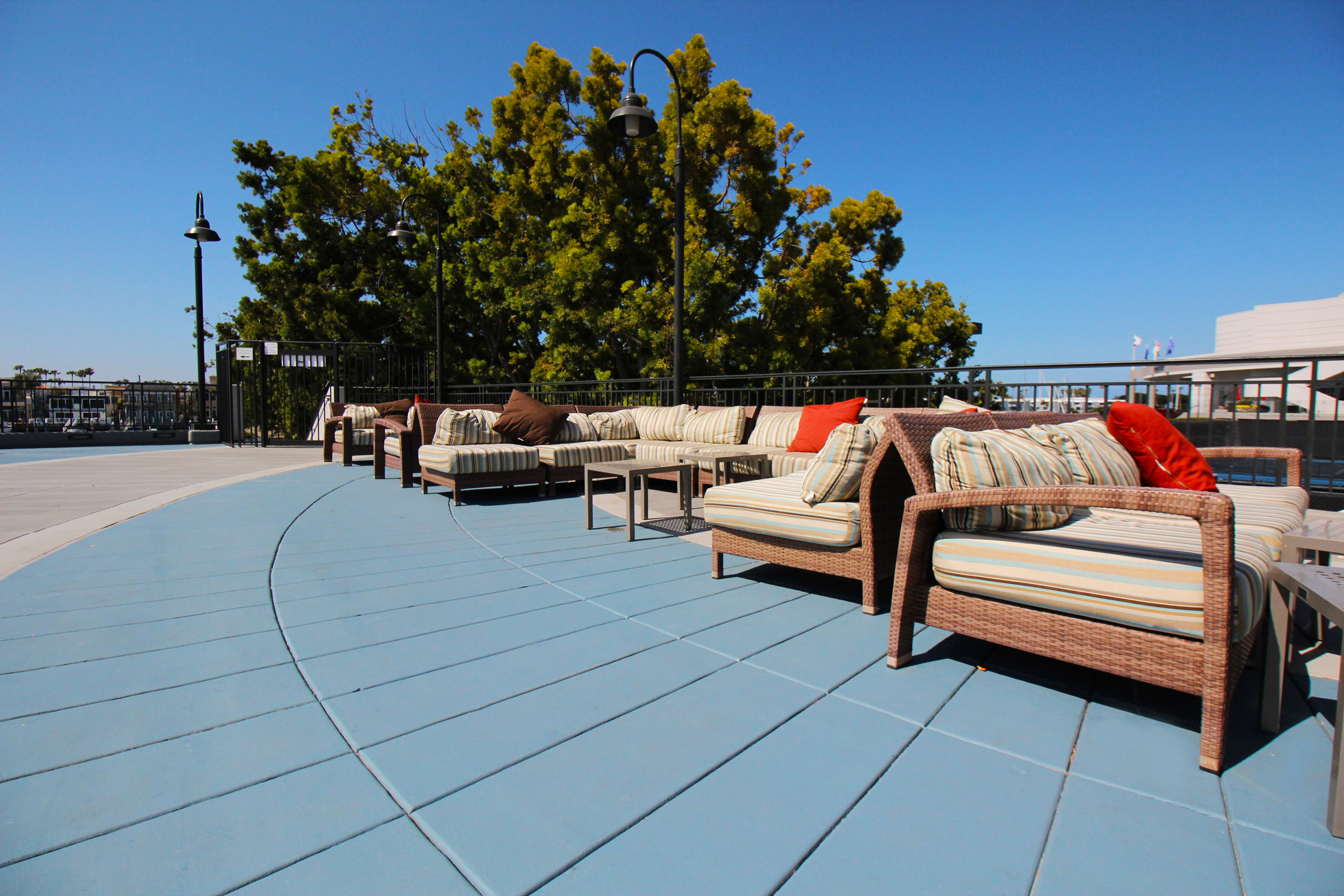Story at a glance:
- A wide portfolio of coatings and applications continues to meet industry’s evolving needs.
- Westcoat offers specialty coating systems for all kinds of needs—including waterproof decking on balconies and around pools as well as solutions for protecting and beautifying parking areas, walkways, or rooftop decks.
Application type, texture, color—an ever-expanding portfolio of building coatings exists today for architects, designers, and end users.
Today’s professionals can choose between cementitious or cement-based coatings or resinous coatings like epoxies, polyurethanes, polyaspartics, urethane cements, and waterproofing coatings—and those are just some of the options. There seems to be a coating solution for almost every application—interior or exterior, new construction or reconstruction, floors or walls.
“Coatings as a whole make up a huge family of chemistries and technologies,” says Todd Cook, product manager at Westcoat, a leader in the field, manufacturing coatings for more than 30 years with systems installed all over North America. “There is a vast array of materials and solutions that fall under the umbrella term of coatings.”
Seamless in nature, the right coating can excel over traditional flooring like tile, brick, or carpet. Coatings also offer greater cleanability without the need for maintaining grout.
Westcoat’s Cove application, for example, can be used with resinous flooring to provide even more ease of maintenance, Cook says. Other specifically formulated coatings also feature anti-microbial additives, ideal for hospitals, veterinary offices, and food and beverage manufacturing.
Other features that can assist designers include chemical, impact, and abrasion resistance; fire resistance; waterproofing; flexibility; sound dampening; UV resistance; slip resistance; and safety striping, among other options.
Coatings and Aesthetics

Westcoat’s Nano Stain is a semi-transparent, decorative concrete stain. Nano technology allows for deeper penetration into concrete substrates. Photo courtesy of Westcoat
“Coatings have really evolved from the standard gray and tan options of the past,” Cook says. “There are unlimited decorative options available for an architect, designer, or owner to choose from.”
Westcoat offers various solid color finishes, including safety or advisory colors, along with custom colors to meet any designer’s palette.
Clear protective coatings like Westcoat’s EC-11 Water-Based Epoxy or SC-65 Water-Based Polyurethane can be used over concrete to protect and enhance the natural beauty of the concrete substrate, while semi-transparent stains can be used with clear coatings to offer the stained concrete look with a durable clear topcoat. Westcoat metallic coatings, including Liquid Dazzle, can be used to offer even more vibrant and unique finishes. Various decorative aggregates like the TC-60 Color Chips, TC-62 Tidalstone Aggregates Blends, or TC-65 Quartz Sand can be broadcasted or mixed into the coating to provide variegated finishes.
Continuing Development

Tidalstone is a multi-layered resinous flooring system that features innovative and decorative aggregate blends. It offers the beauty of terrazzo without the high cost or difficult installation. Photo courtesy of Westcoat
Westcoat also recently released its Tidalstone system—a thin film, high build system. The multi-layered resinous flooring system features the TC-62 Tidalstone aggregate blend and produces a finish that is similar to the look of polished concrete or terrazzo flooring, with a natural flat finish, while providing all the benefits of a resinous flooring, like chemical and abrasion resistance.
The company also recently extended its Temper-Crete line with urethane cement technology. Urethane cements have been proven to outperform previous resinous materials in spaces like food and beverage manufacturing due to their thermal shock resistance, moisture tolerance, and function as well as versatile underlayment for various finishes.
“Emerging technologies are always occurring in this industry,” Cook says, citing the demand of architects, designers, and facility managers working to better serve the industry. “We also see greater education and exposure of the coating industry, which pushes further demand. And we see regulatory changes occurring that focus on certain materials, VOC limitations, and goals regarding better sustainability.”
Exciting R&D
Westcoat continues to respond to the demand for more options. Innovation requires various customer touchpoints—job walks, lunch and learns, and keeping up with new rules and regulations. “Our team works to be proactive and not reactive. This allows us to stay ahead of trends or updated regulations.”
Westcoat has an extensive team of technical and architectural reps helping customers through the design and product selection process while soliciting feedback about product performance and needs. Fresh solutions are then brought to life by Westcoat’s dedicated team of chemists, formulators, and application specialists. As a result Westcoat is continually expanding its offerings.
For example, Westcoat previously observed food and beverage manufacturing where existing flooring technologies—tile or epoxy—were installed but did not properly meet the facility’s needs. The result was a shorter service life for the product, poor performance, and damage to the facility’s concrete. Westcoat saw how its urethane cement technology, like Temper-Crete, could support the harsh demands of this environment.
Cook says product users trust manufacturers to have the right solutions to help properly address design needs. “Some coatings aren’t a single solution that can be applied across the board, and what may have worked on a previous project may not be appropriate for the next project,” he says. “It’s important to have open communication with the coating manufacturer, to outline the use and demand of the space so the correct solution can be provided.”

